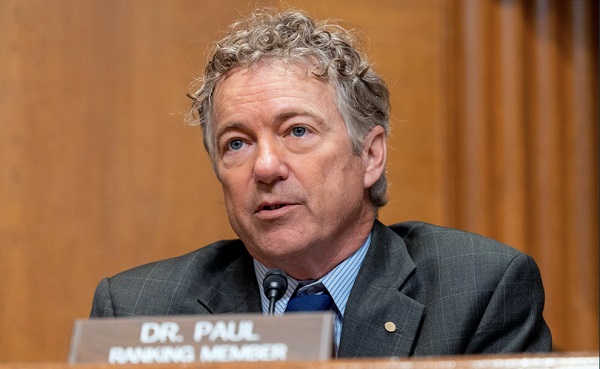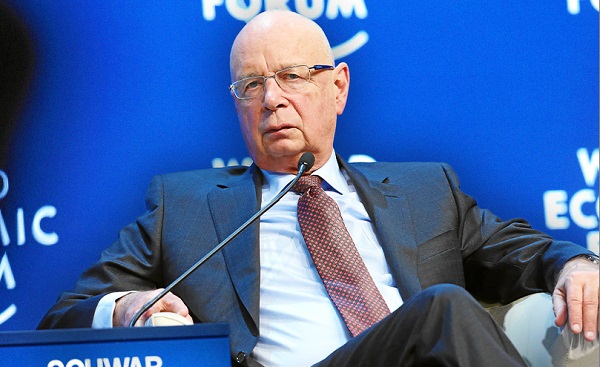Business
Report: Federal agencies spent millions of taxpayer money torturing cats

U.S. Sen. Rand Paul, R-Kentucky
From The Center Square
By
A new report published by U.S. Sen. Rand Paul, R-KY, highlights more than $1 trillion worth of taxpayer money spent on projects that he argues wastes and abuses taxpayer money.
Tucked in the report are three programs funded by federal agencies using millions of taxpayer dollars to experiment on cats.
The details are explicit and gruesome.
$11 million on Department of Defense “Orwellian cat experiments”
The US Department of Defense spent nearly $11 million on “Orwellian cat experiments” that have nothing to do with training the U.S. military or national defense.
“When George Orwell wrote 1984, he couldn’t have imagined the bizarre, dystopian reality we find ourselves in today where tax dollars are being spent to shock cats into having erections and defecating marbles. Yes, you read that correctly,” the report states.
Through the DOD’s, Defense Advanced Research Projects Agency (DARPA), $10,851,439 of taxpayer dollars were allocated to the University of Pittsburgh to conduct “grotesque and extremely invasive experiments on cats.”
This involved slicing open the backs of male cats to expose their spinal cords and inserting electrodes to send electric shocks “to make cats have an erection.”
The cats were then subjected to “even more electric shocks, sometimes for up to 10 minutes at a time, before having their spinal cords severed to paralyze their lower bodies,” the report states. “And just for good measure, the shocks continued for another 10 minutes. All this, in the name of ‘science.’”
In another DARPA-funded experiment, balloons were inserted into the cats’ colons and marbles into their rectums “to force these poor animals to defecate the marbles via electric shock.”
“Nothing says ‘national defense’ quite like torturing cats to poop marbles,” the report notes. “If we can’t stop the government from shocking cats into defecating marbles, then what can we stop?”
$2.24 million on feline COVID experiments
The report also notes that under the direction of Dr. Anthony Fauci, since 2022, the National Institute of Allergy and Infectious Diseases and the U.S. Department of Agriculture allocated $2.24 million in grants to Cornell University to conduct feline COVID experiments.
Through a University of Illinois NIAID subgrant, Cornell received $1.59 million over the past two years in addition to a $650,000 USDA grant, bringing the total to $2.24 million, the report notes.
The experiments led to the suffering and death of 30 cats, according to the records of the experiments, the report notes.
The experiments involved injecting healthy cats with COVID-19, observing them suffer and then killing them in groups of four. The cats were not given any type of vaccine or treatment but killed as early as two days after being injected and left isolated in cages.
NIAID funding for the program is slated to continue through 2025; the USDA’s through May 2026, the report notes.
“It’s a mystery as to why the U.S. government continues to fund these barbaric types of studies, especially when the knowledge gained is either useless to society or could be learned without torturing an animal,” the report states.
$1.5 million to torture primarily female kittens
The National Institutes of Health spent more than $1.5 million to torture primarily female kittens in an extreme example “of waste and cruelty,” the report found.
“If you learned that your money is being used to electro-shock young kittens, torturing them for hours on end, and to the point that they vomit, would you believe it?” the report asks. “Since 2019, $1,513,299 worth of taxpayer money has been going to these medieval-type experiments. This is not some distant, dystopian future; it’s happening right now at the University of Pittsburgh, courtesy of a grant from the NIH.”
According to the report, primarily female kittens between four and six months old were strapped to a hydraulic table, spun 360 degrees, flashed with bright lights, injected with copper sulfate, had holes drilled into their skulls, to be “shocked, and abused without resistance.”
According to NIH, the purpose of the experiments is to study how different species, like cats and monkeys, respond to motion sickness. Understanding responses to the test “could have implications for human health, potentially aiding in the treatment of conditions like vertigo or helping us understand the effects of space travel on the human body,” the report states.
The report cites primary sources and includes photographs of the animals and diagrams of the machines used.
Business
Chinese firm unveils palm-based biometric ID payments, sparking fresh privacy concerns

By Ken Macon
Alipay’s biometric PL1 scanner uses vein and palm-print data for processing payments, raising security concerns over the storage and use of permanent biometric data.
Alipay, the financial arm of Alibaba, has introduced a new palm-based biometric terminal, dubbed the PL1, which enables individuals to make purchases simply by presenting their hand – no phone, card, or PIN required. Positioned as a faster, touch-free alternative for payment, this system reflects a growing industry shift toward frictionless biometric transactions.
At the core of the PL1 is a dual-mode recognition system that combines surface palm print detection with internal vein mapping. This multi-layered authentication relies on deeply unique biological signatures that are significantly harder to replicate than more common methods like fingerprints or facial scans. Alipay reports that the device maintains a false acceptance rate of less than one in a million, suggesting a substantial improvement in resisting identity spoofing.
Enrollment is designed to be quick: users hover their palm over the sensor and link their account through a QR code. Once registered, purchases are completed in around two seconds without physical interaction. During early trials in Hangzhou, this system reportedly accelerated checkout lines and contributed to more hygienic point-of-sale environments.
The PL1 arrives at a time of rapid expansion in the biometric payments sector. Forecasts estimate that more than 3 billion people will use biometrics for transactions by 2026, with total payments surpassing $5 trillion. Major players are already onboard: Amazon has integrated palm authentication across U.S. retail and healthcare facilities, while JP Morgan is gearing up for a national deployment in the same year.

Alipay envisions the PL1’s use extending well beyond checkout counters. It is exploring applications in public transit, controlled access facilities, and healthcare check-ins, reflecting a broader trend toward embedding biometric systems in daily infrastructure. However, while domestic deployment benefits from favorable policy conditions, international expansion may be constrained by differing legal standards, particularly in jurisdictions that enforce stringent rules on biometric data usage and consent.
Despite the technological advancements and convenience the PL1 offers, privacy remains a major point of contention. Unlike passwords or cards that can be reset or replaced, biometric data is immutable. If compromised, individuals cannot simply “change” their palm patterns or vein structures. This permanence heightens the stakes of any potential data breach and raises long-term concerns about identity theft and surveillance.
Alipay’s approach, storing encrypted biometric templates locally on devices and restricting data flow within national border, does address certain regulatory demands, especially within China, but the broader implications of biometrics are likely to be a growing privacy and surveillance concern in the coming years.
Business
Trump considers $5K bonus for moms to increase birthrate

 MxM News
MxM News
Quick Hit:
President Trump voiced support Tuesday for a $5,000 cash bonus for new mothers, as his administration weighs policies to counter the country’s declining birthrate. The idea is part of a broader push to promote family growth and revive the American family structure.
Key Details:
- Trump said a reported “baby bonus” plan “sounds like a good idea to me” during an Oval Office interview.
- Proposals under consideration include a $5,000 birth bonus, prioritizing Fulbright scholarships for parents, and fertility education programs.
- U.S. birthrates hit a 44-year low in 2023, with fewer than 3.6 million babies born.
Diving Deeper:
President Donald Trump signaled his support Tuesday for offering financial incentives to new mothers, including a potential $5,000 cash bonus for each child born, as part of an effort to reverse America’s falling birthrate. “Sounds like a good idea to me,” Trump told The New York Post in response to reports his administration is exploring such measures.
The discussions highlight growing concern among Trump administration officials and allies about the long-term implications of declining fertility and family formation in the United States. According to the report, administration aides have been consulting with pro-family advocates and policy experts to brainstorm solutions aimed at encouraging larger families.
Among the proposals: a $5,000 direct payment to new mothers, allocating 30% of all Fulbright scholarships to married applicants or those with children, and launching federally supported fertility education programs for women. One such program would educate women on their ovulation cycles to help them better understand their reproductive health and increase their chances of conceiving.
The concern stems from sharp demographic shifts. The number of babies born in the U.S. fell to just under 3.6 million in 2023—down 76,000 from 2022 and the lowest figure since 1979. The average American family now has fewer than two children, a dramatic drop from the once-common “2.5 children” norm.
Though the birthrate briefly rose from 2021 to 2022, that bump appears to have been temporary. Additionally, the age of motherhood is trending older, with fewer teens and young women having children, while more women in their 30s and 40s are giving birth.
White House Press Secretary Karoline Leavitt underscored the administration’s commitment to families, saying, “The President wants America to be a country where all children can safely grow up and achieve the American dream.” Leavitt, herself a mother, added, “I am proud to work for a president who is taking significant action to leave a better country for the next generation.”
-

 2025 Federal Election2 days ago
2025 Federal Election2 days agoOttawa Confirms China interfering with 2025 federal election: Beijing Seeks to Block Joe Tay’s Election
-

 2025 Federal Election1 day ago
2025 Federal Election1 day agoBREAKING: THE FEDERAL BRIEF THAT SHOULD SINK CARNEY
-

 2025 Federal Election2 days ago
2025 Federal Election2 days agoHow Canada’s Mainstream Media Lost the Public Trust
-

 2025 Federal Election2 days ago
2025 Federal Election2 days agoReal Homes vs. Modular Shoeboxes: The Housing Battle Between Poilievre and Carney
-

 2025 Federal Election2 days ago
2025 Federal Election2 days agoCHINESE ELECTION THREAT WARNING: Conservative Candidate Joe Tay Paused Public Campaign
-

 John Stossel2 days ago
John Stossel2 days agoClimate Change Myths Part 2: Wildfires, Drought, Rising Sea Level, and Coral Reefs
-

 Media1 day ago
Media1 day agoCBC retracts false claims about residential schools after accusing Rebel News of ‘misinformation’
-

 Business1 day ago
Business1 day ago‘Great Reset’ champion Klaus Schwab resigns from WEF





